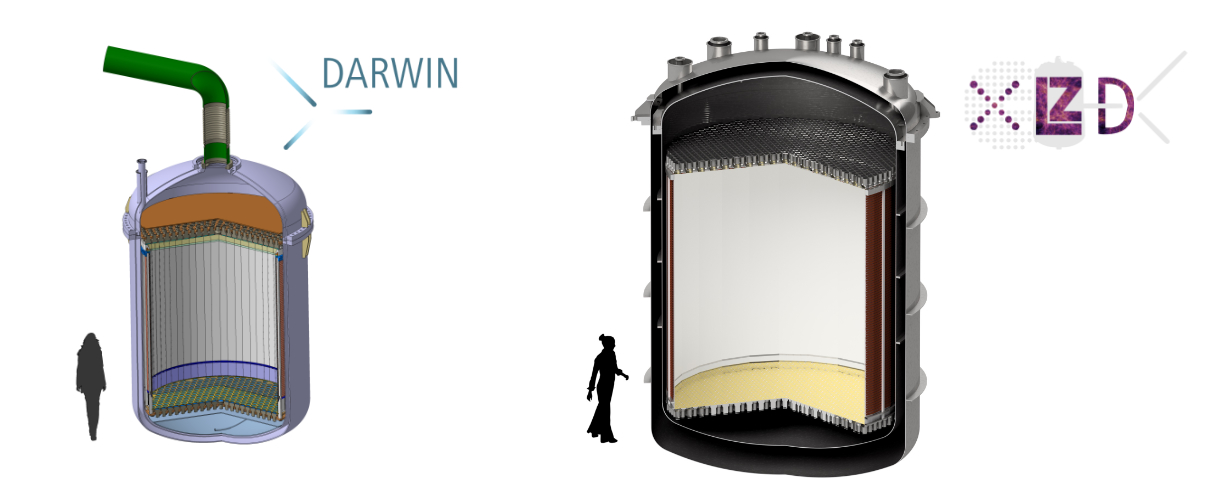DARWIN and XLZD

DARWIN (DARk matter WImp search with liquid xenon) is a planned experiment for the direct detection of dark matter using a multi-ton liquid xenon time projection chamber at its core. Its primary goal will be to explore the experimentally accessible parameter space for Weakly Interacting Massive Particles (WIMPs) in a wide mass-range, until neutrino interactions with the target become an irreducible background. The prompt scintillation light and the charge signals induced by particle interactions in the xenon will be observed by VUV sensitive, ultra-low background photosensors. In its original design (J. Aalbers et al JCAP11(2016)017), the DARWIN cryostat houses 50t of Xe, with 40t of Xe in the active TPC with 2.6m diameter and an aspect ratio of 1.
Besides its excellent sensitivity to WIMPs above a mass of 5 GeV/c2, such a detector with its large mass, low-energy threshold and ultra-low background level will also be sensitive to other rare interactions. It will search for solar axions, galactic axion-like particles and the neutrinoless double-beta decay of 136Xe (Agostini, F. et al. Eur. Phys. J. C 80, 808 (2020)), as well as measure the low-energy solar neutrino flux with <1% precision (Aalbers, J. et al. Eur. Phys. J. C 80, 1133 (2020)), observe coherent neutrino-nucleus interactions, and detect galactic supernovae.
With the foundation of the XLZD (short for XENON, LUX-Zeplin and DARWIN) collaboration in 2024, DARWIN may be realized as a larger, joint effort within XLZD. The XLZD nominal system features a LXe-TPC with a 1:1 aspect ratio for 60 tonnes of active mass (2.98 m indiameter and height) housed in a double-walled cryostat. While the XLZD TPC diameter is fixed early in the detector design, adjusting the field cage height will allow for an interim detector of reduced mass (up to 40 tonnes) and the flexibility to achieve a larger target mass of 80 tonnes for the final detector. This strategy provides a central element of risk and opportunity management, allowing for early testing of detector components and adaptability to the xenon market.See also the XLZD Design Book for more details. DARWIN/XLZD consists of more than 400 scientists combining ample expertise on dark matter search with liquid xenon, from neutrino and high energy physics, and with backgrounds from extremely low backgrounds to particle physics theory.
Further information: Official DARWIN website and Official XLZD website
